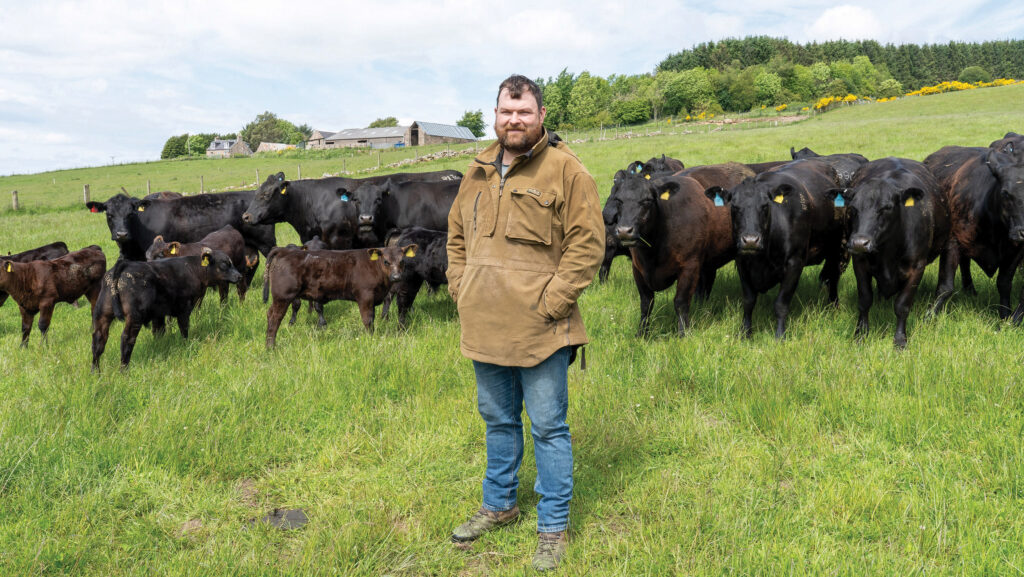Farmer Focus: Great time for the suckler industry to adapt
 Duncan Morrison © Angus Findlay
Duncan Morrison © Angus Findlay September is a relatively quiet month for us. We had the last of the second-cut silage to do, leaving just regular stock work after that.
This has allowed us to take some well-earned time off to recharge ahead of a hectic October and November, which are some of our busiest months.
However, they are also my favourites, as they are full-on with stock work.
See also: How to use a Bud Box system to make cattle handling easier
If I could spend every day working alongside stock with no machinery or paperwork to do, I’d be a happy man.
We were also able to get a day away and purchase some Lleyn tups recently for our expanding flock.
Grass growth has been pretty good in the past month, although it’s starting to dwindle a bit now, and cows that are feeding a spring-born calf soon let you know when they need a new paddock.
We don’t creep feed, so cows that are able to feed a strong calf without losing too much condition are important, especially as the cows will be outwintered at up to 333m.
The coming months will give us a chance to assess how the herd has performed this year, as we look at weaning weights, in-calf rates and body condition scores, and start to make some breeding decisions for next year.
I have read several articles lately about continued suckler herd decline despite record prices.
It seems to me the suckler cow is often the first casualty when businesses look to cut costs. I think it’s a shame people get rid rather than changing system.
I realise there are various disease challenges in certain regions that make it very difficult, but there are many farms I see in this area that are crying out for cows.
We are seeing increasing anthelmintics resistance in the sheep sector, and I wonder if more cattle could help improve that situation.
I realise desire and labour may be lacking, but adding a herd to a farm could be chance for a young farmer to get their foot in the door or collaborate with a neighbour.
I believe the beef sector has a brilliant future, but the industry needs to be prepared to adapt to keep cows on the ground. Long live the humble suckler cow.

